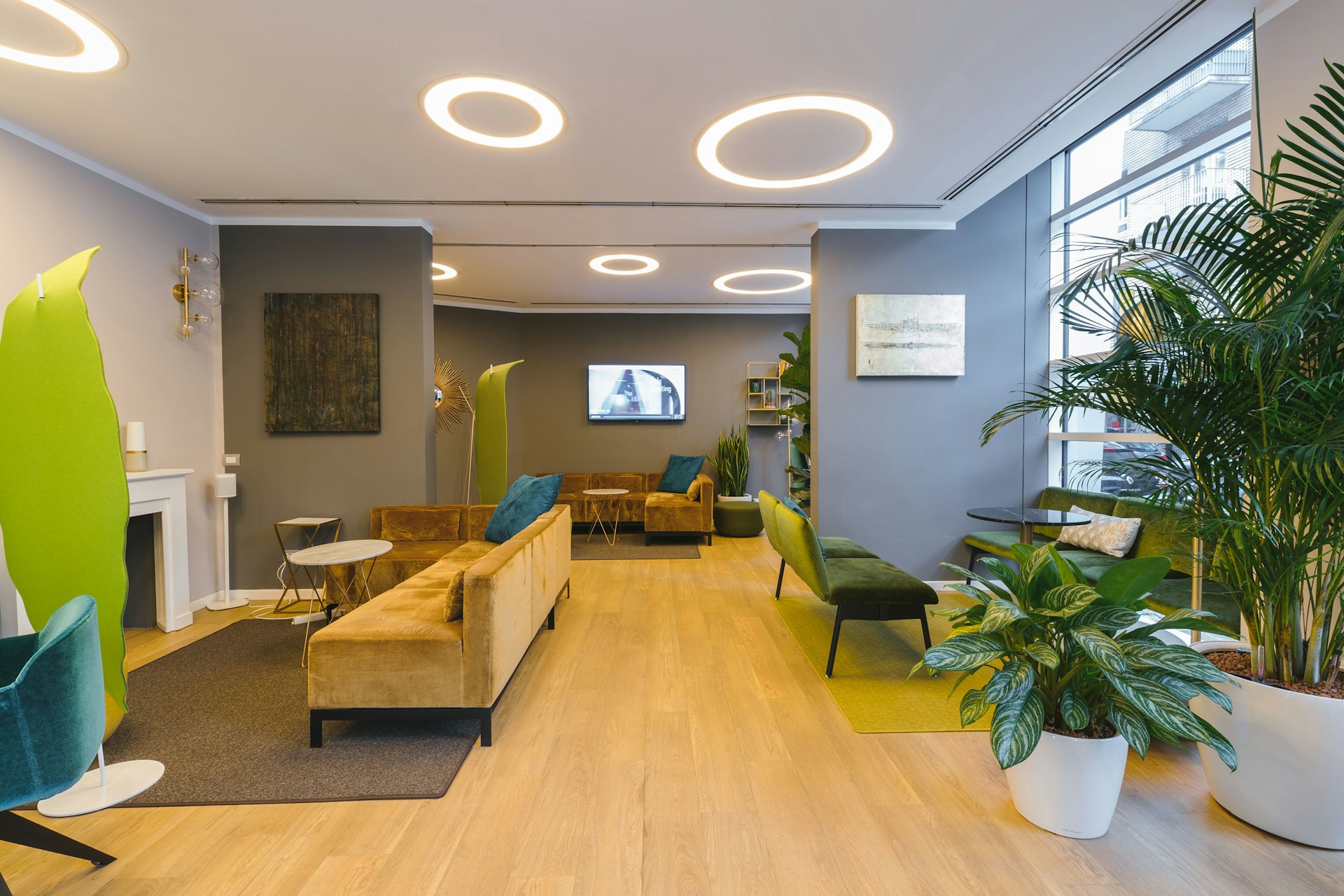:quality(80)/business-review.eu/wp-content/uploads/2024/05/A-Smart-Office-For-A-Smart-Building.jpg)
Modern buildings are becoming more dynamic and customizable, especially in office settings. The space there is undergoing dramatic transformations, changing the nature of both interpersonal communications and the place we once knew as “the office.”
Gartner predicts that the primary source of competitive advantage for 30% of organizations over the next few years will be the ability to creatively use the available digital workplace.
Under these circumstances, companies, and building owners will be forced to invest in the latest technologies.
Employee Expectations
Employee expectations of office space are changing dramatically. Publications by AV experts from https://www.modulit.eu/ and other distributors of audio-video equipment show that millennials are willing to accept lower wages to work in a good office. Moreover, they will consider leaving if their workplace is outdated or ineffective.
Given this, it’s becoming crucial for employers to stay abreast of swiftly evolving employee expectations to effectively attract and retain top talent.
An office should become a platform for gaining experience – both personal and professional. Maintaining a digital culture plays a big role in this respect, as does flexibility in terms of workflow and physical space.
Designed to stimulate creativity and establish healthier work environments, workspaces are now becoming more “aware” through an ecosystem that allows buildings to dynamically adapt to the demands of users. Such an ecosystem normally consists of building, energy, and space management systems.

Collaboration with Colleagues and Productivity
Survey results show that 87% of employees around the world do not feel motivated to interact productively with colleagues.
Since this is primarily related to how the workspace is organized, companies need to rethink the role and purpose of the office and focus on providing a combination of streamlined communication and social collaboration.
Optimizing Shared Services and Redesigning Work Desks
The smart office blurs the line between traditional formal and informal settings, offering more dedicated social spaces and areas designed for communication or team building.
That’s the reason why many companies revolutionize office operations by optimizing the use of shared services and work desks on a part-time or multi-lease basis.
With desk layouts designed by algorithms and spaces that can adapt to employee priorities and needs, companies can respond to the need for mobility and flexible consumption in today’s digital life.
By configuring open spaces with sound-absorbing fabrics and glass doors, design engineers ensure privacy within an open plan, meaning staff no longer have to be confined to physical walls.
Solutions Enabled by the Internet of Things
Real-time collaboration has also become an extremely important technology for modern offices. The Internet of Things (IoT) concept is playing a key role here: desktop, portable, and wearable devices become integrated into the design of the office space and communicate with each other through a cloud network.
Examples of such technologies in offices include:
- fixed AV (audio-video) screens or projection screens that can be controlled using a smartphone;
- advanced software that can determine the occupancy of a room by employees;
- Wi-Fi platforms that help employees navigate the office floor plan by using a smartphone;
- smart lighting systems (SLS) capable of adjusting brightness and color temperature according to natural light and occupancy;
- sensors that are smart enough to monitor temperature, air quality, and noise levels in office spaces.
These and many other scalable and reliable solutions that IoT offers can significantly improve employee productivity and, most importantly, business efficiency.

The universal trend of sustainable development demands many companies to prioritize eco-friendly practices in designing their workspaces.
With 72% of office workers emphasizing the importance of a sustainable environment, adopting such practices has become essential for businesses to stay competitive.
Through thoughtful design that optimizes space, energy consumption, and resources, smart offices can reduce their overall environmental impact and save money.
Implementing sustainable resource management as part of a business strategy will help companies achieve a competitive advantage and attract new employees, clients, and business partners.
Examples of such resource management span from stand-alone energy systems that turn off heating and lighting when rooms are unoccupied, to systems that monitor and optimize water and electricity use.
Conclusion
People are the main asset of any company. To make their lives easier, safer, and more comfortable, it is important to follow constantly evolving trends and technologies.
To this end, every businessman and entrepreneur should constantly update their workspaces, turning conventional offices into smart ones, characterized as efficient, easy to use, and technology-driven.



:quality(80)/business-review.eu/wp-content/uploads/2024/07/KV_Vara-fotbalului-continua-la-Betano-cu-meciul-Legends-2004-vs-UEFA-All-Stars_Betano-scaled.jpg)



:quality(80)/business-review.eu/wp-content/uploads/2024/06/22C0420_006.jpg)

:quality(80)/business-review.eu/wp-content/uploads/2024/06/COVER-1-4.jpg)



:quality(80)/business-review.eu/wp-content/uploads/2024/06/br-june-2.jpg)
:quality(50)/business-review.eu/wp-content/uploads/2024/07/VGP-Park-Timisoara_-8thbuilding_iulie-24.jpg)
:quality(50)/business-review.eu/wp-content/uploads/2024/07/America-House-Offices-Bucharest-Fortim-Trusted-Advisors.jpg)
:quality(50)/business-review.eu/wp-content/uploads/2024/07/BeFunky-collage-33-scaled.jpg)